Art, art habits and processes….. Artwork added
“Because we are afraid to see the stranger in ourselves, as well as, in the other. We are not ready to feel the change, we prefer to believe that we remain the same and unchanged, so the game goes on as always. Otherwise we will have to find new rules and new games and that requires strengths we don’t have. That’s why we pretend that all changes are non-existent, that we remain who we are and that others remain who they are” From A New Homeland Outside The Window by Thodoris Kallifatidis
“When I made my debut as Anne Frank the critics wrote that I was Anne, I don’t believe that my life or my stage interpretation or appearance had direct parallels with the heroine of the diary, but that I really borrowed Anne’s soul for those two hours on the stage. Let Anne play Anne. Many years passed before I again experienced such complete identification.” From Changing by actress Liv Ullman
“…. moment by moment, you can actually surf on the waves of your own experience. And the surfboard — I’ve never said this before, and may be overextending the metaphor — but the surfboard with you on it is actually awareness. And you can inhabit that space in a way that’s, in that moment you are already free….” Jon Kabat Zinn
“This allows happiness to become an easily commodified narrative able to potentially accommodate anyone regardless of particular circumstances.” Edgar Cabanas and Eva Illouz
“All the children sat looking at Pippi, who lay flat on the floor, drawing to her heart’s content. ‘But, Pippi,’ said the teacher impatiently, ‘why in the world aren’t you drawing on your paper?’…. ‘I filled that long ago. There isn’t room enough for my whole horse on that little snip of paper.” From Pippi Longstocking by Astrid Lindgren****
**** Astrid Lindgren was a writer, who was also known for her support of children’s and animal rights, as well as her opposition to any form of corporal punishment. In 1993 she was awarded the Right Livelihood Award (also known as the “Alternative Nobel Prize”) “for her unique written work, dedicated to the rights of children and respect for their individuality”
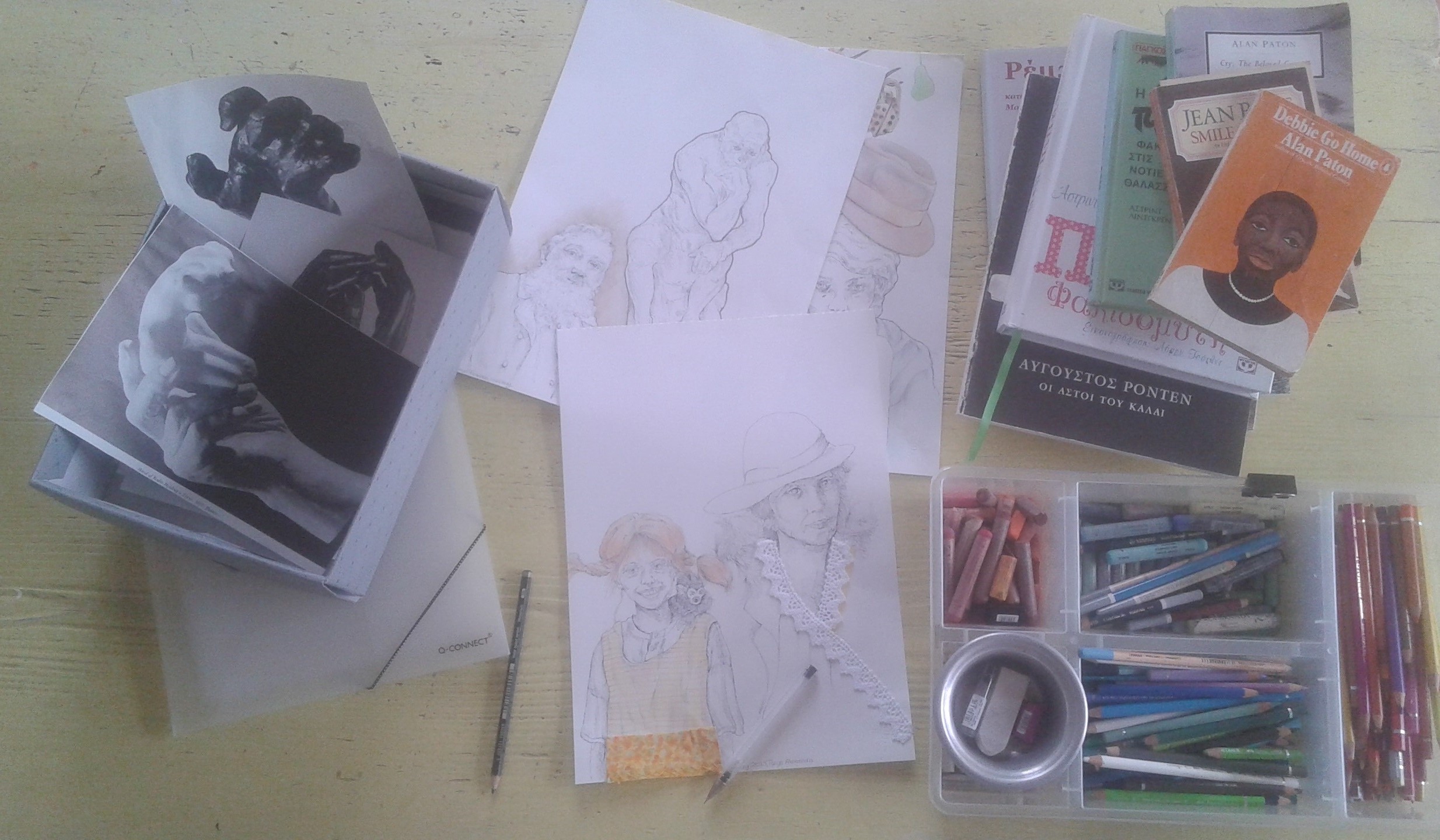
An art product, even a single image, can reflect a layered narrative. It might also involve a complex preparatory process of different things coming together. It’s as if many threads come together for a little while to create that moment of art, so one could say that the process is just as important as the product…. When I’m engaging with art, books, past experience or the memory of it, recent insights, experiences, emotions and ideas can arise, mingle and interact to produce whatever is produced, influencing what I have made without necessarily leaving visible traces. It’s as if ideas and themes sort of pour out of me, and initially I need to select a theme or series of themes to work on. I then loosely organize the material on paper or canvas.
Art making also disrupts my tendency to be tidy and relatively organized. The surface on which I might be working on gradually gets filled up with books, objects, different art material and anything else required. I sometimes need to move on to other surfaces, including the floor space. This especially happens when I move to “flow states”. Flow states were, initially I think, studied by Mihaly Csikszentmihalyi. My own experience is that of being so absorbed with what I’m doing that my attention is sort of completely held by it. I might skip eating and drinking. One definition suggests that “psychological flow captures the positive mental state of being completely absorbed, focused, and involved in your activities at a certain point in time, as well as deriving enjoyment from being engaged in that activity.” However, once I have finished a drawing or series of images or if I’m painting once I’m done for the day I clean up, which is important for me because it creates space that allows me to carry on with other things, and also, opens up space to start something new, unburdened and free from the previous process and activity.
ARTWORK
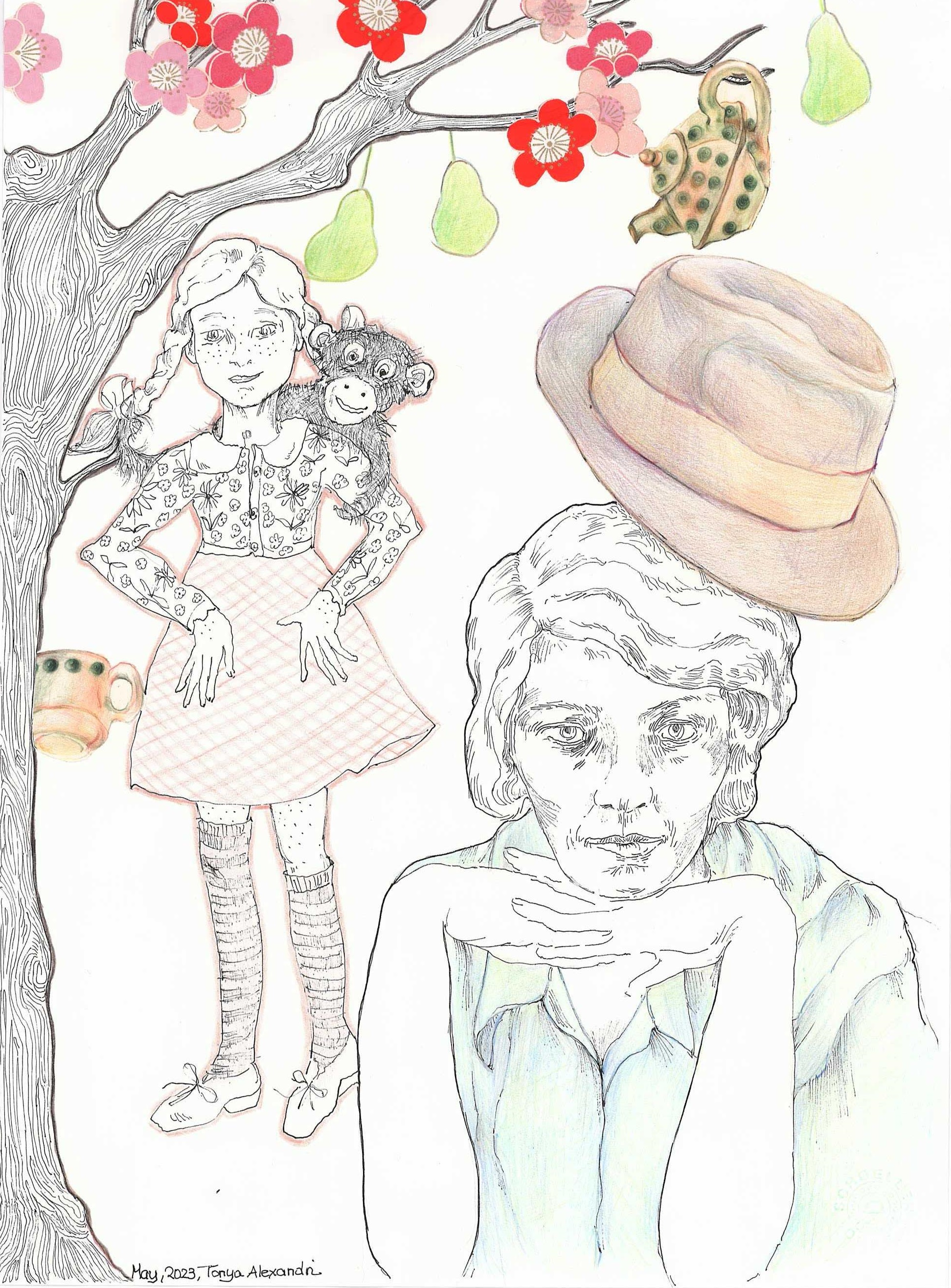
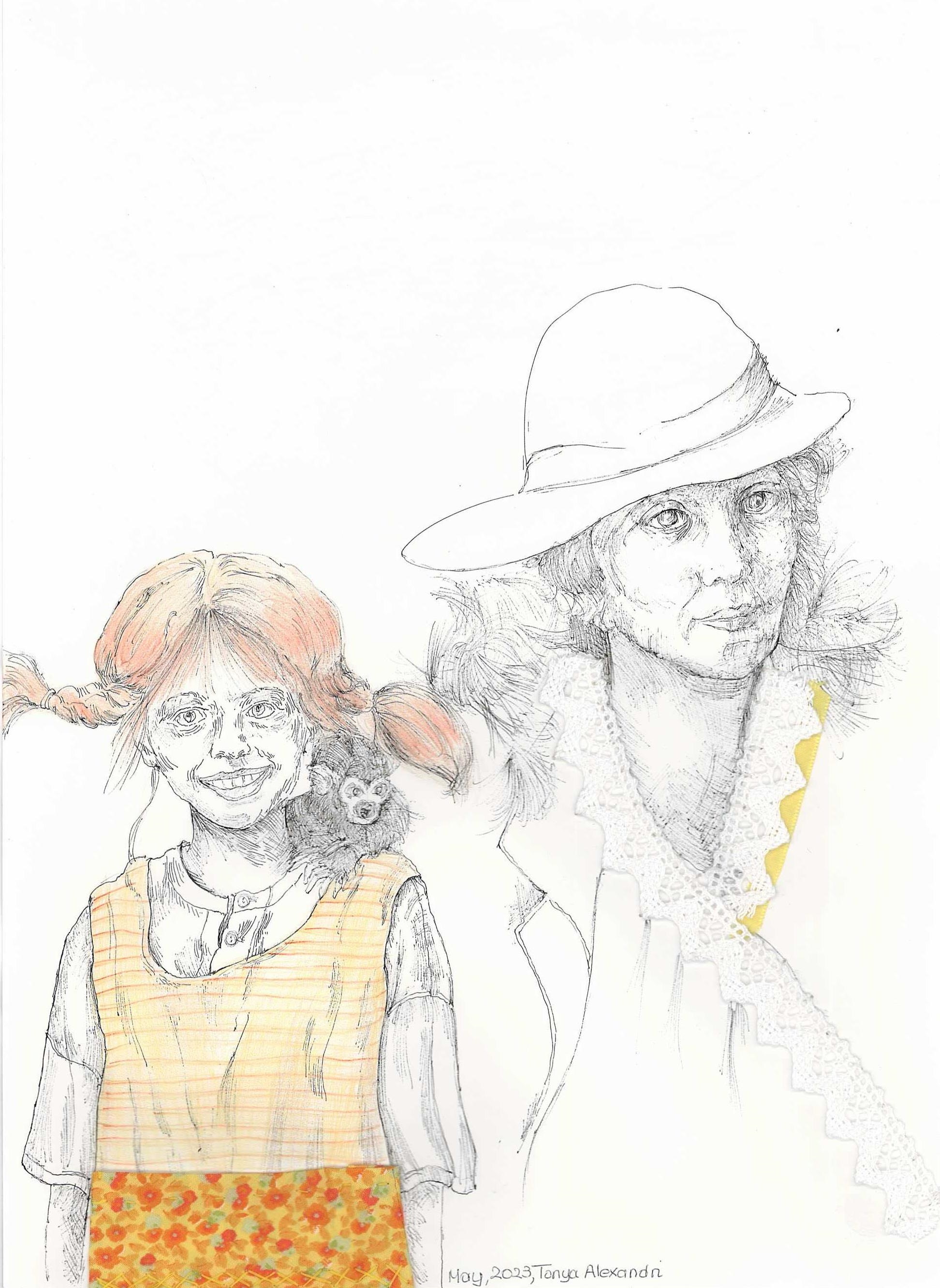
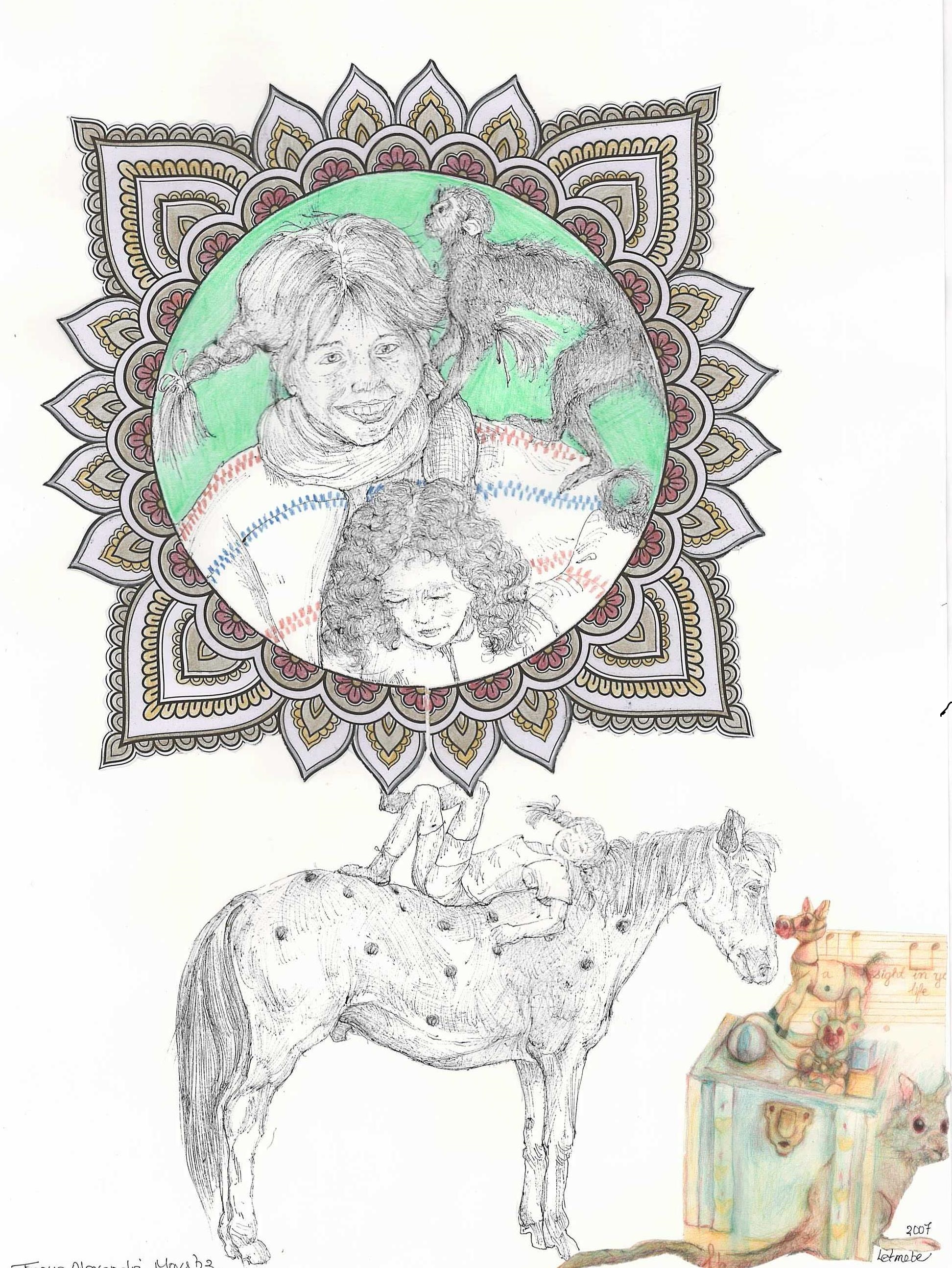
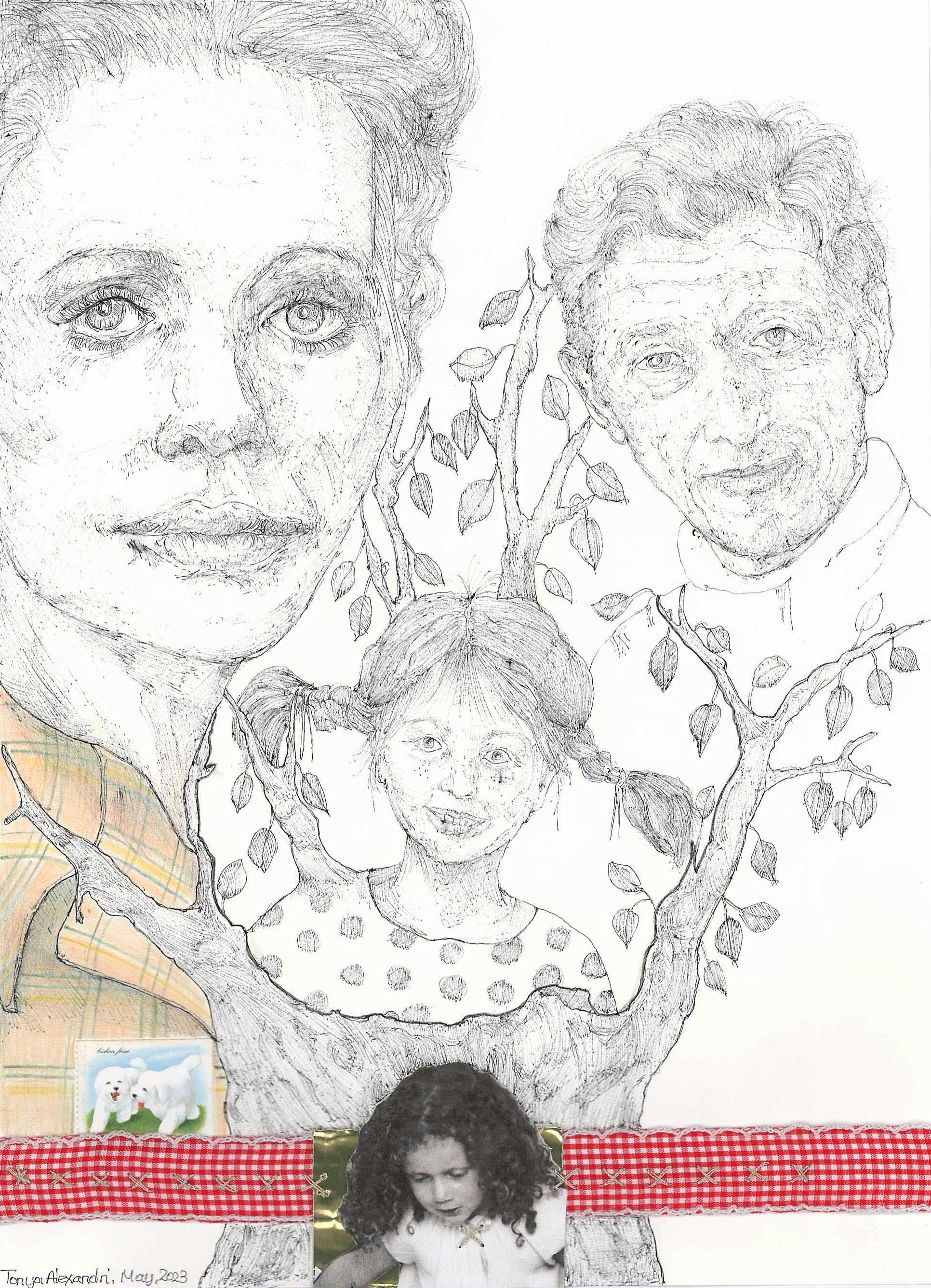
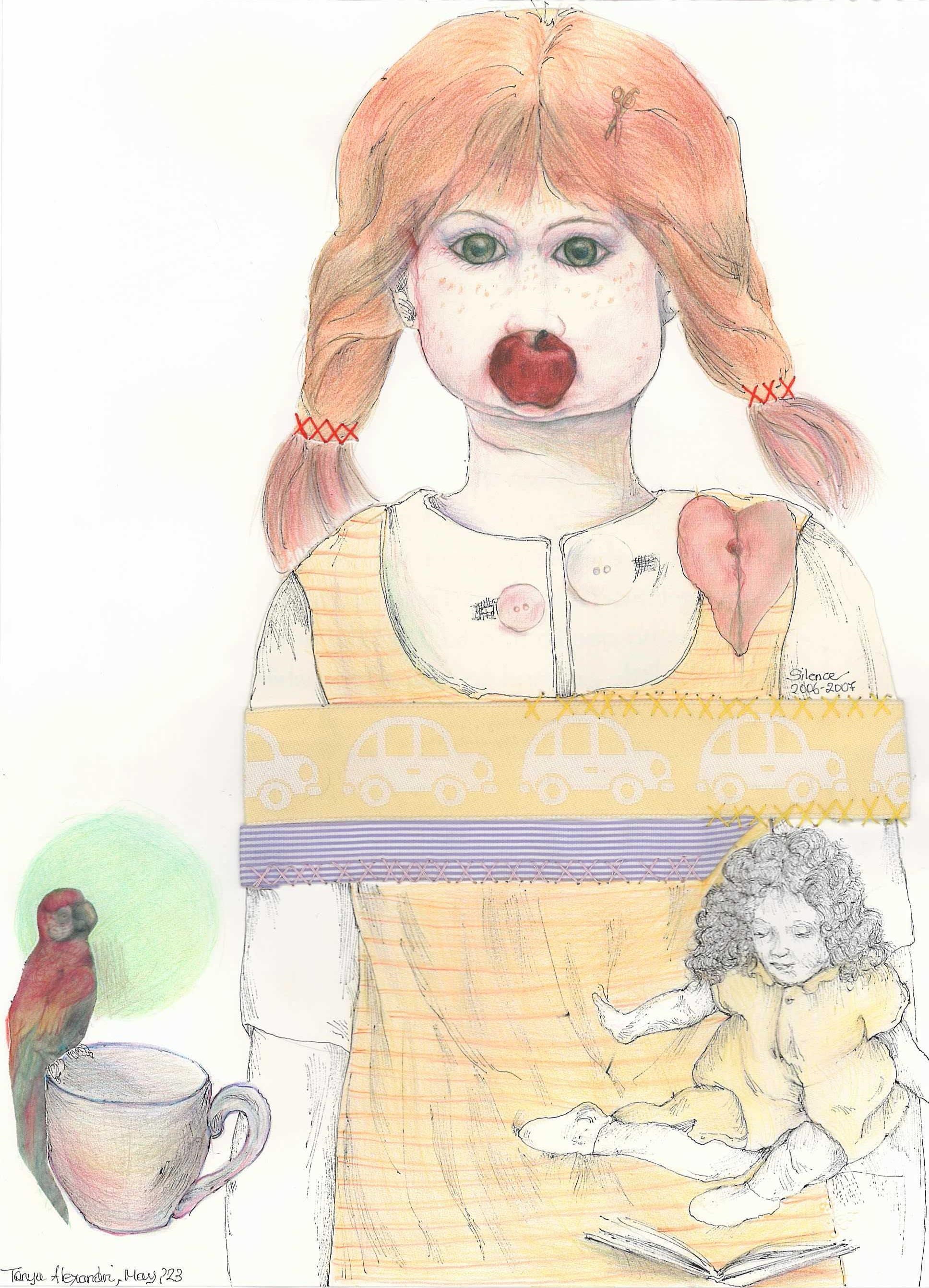
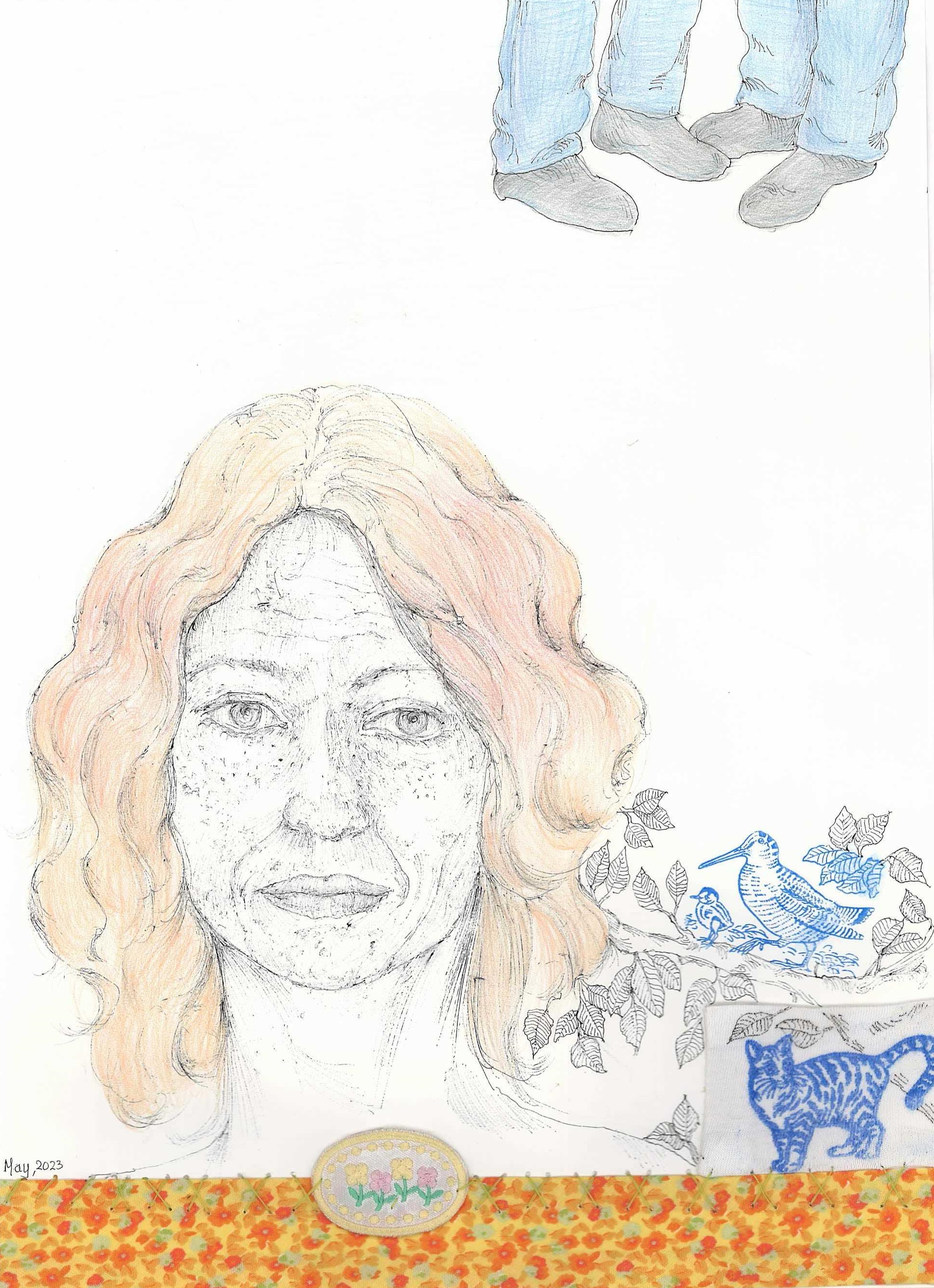
In today’s’ post I’d also like to write about the gist of some of my recent insights, which actually is not new knowledge at all, but which has become more salient during moments of quiet recently.So, some of what has been salient is: a) the importance of the need to strike a balance between our attention on the past, present and future. At different times in our lives, and depending on what we are dealing with or the requirements of that phase, our attention and the emphasis we put on things are bound to shift. Also, the present moment is what we’ve got, but as human beings living on this planet, the ability or opportunity to make sense of our past and our memory are very important because often this determines the quality of our life, health, choices and agency. Being grounded in the present, returning to the present moment, being aware of our experience moment to moment, to whatever extent possible, is a path towards greater freedom and well-being. In his book, Waking Up, Sam Harris, writes: “It is always now. This might sound trite, but it is the truth. It’s not quite true as a matter of neurology, because our minds are built upon layers of inputs whose timing we know must be different. But it is true as a matter of conscious experience. The reality of your life is always now. And to realize this…. is liberating.”
However, it is also important to be able to look at the future. Part of the experience of orienting ourselves towards a future is not only being able to embrace the inherent not knowing and uncertainty of tomorrow, but also the setting of goals and the sense that there is a supportive container to achieve or to move towards. Otherwise, it can feel like one is in some sense stranded in the present b) the need to strike a balance between exploring, healing and focusing on our interiority / inner world, and the outer world, and of being knowledgeable and aware of the social contexts and circumstances we are embedded in. Agency, for instance, is an inner and outer affair, so is health, so is safety, and most other things in life.
Bypassing socio-economic and political reality serves particular purposes. After all, to a great extent it is socio-economic realities, for instance, that to a great extent keep millions of people in developing countries poor, to provide one glaring example, and so on. In their book Manufacturing Happy Citizens: How the Science and Industry of Happiness Control Our Lives, Edgar Cabanas and Eva Illouz discuss how by centering on happiness through only individualized means we stop questioning how socio-economic inequity causes individuals to suffer or how political decisions impact peoples’ emotional well-being. They argue that “if happiness has come to be so prominent in neoliberal societies, it is because it has proven a very useful concept for rekindling, legitimizing and re-institutionalizing individualism in seemingly non-ideological terms through science’s neutral and authoritative discourse…… Allegedly, it is not society that needs reform, but individuals who need to adapt, change and improve…”
Of course, it’s by no means to say that psychological growth and the development of strengths and resilience or the reckoning with our traumas are not recommendable and necessary, especially, when things get tough, but simply resting on the belief that the root of peoples’ problems is to be found only in individuals themselves, rather than in a socio-political and economic reality is not only false, but also problematic. As always, viewing situations and realities from different perspectives allows a bigger picture to emerge. Being eclectic and appreciative of wisdom and knowledge from different sources or people can also be useful.
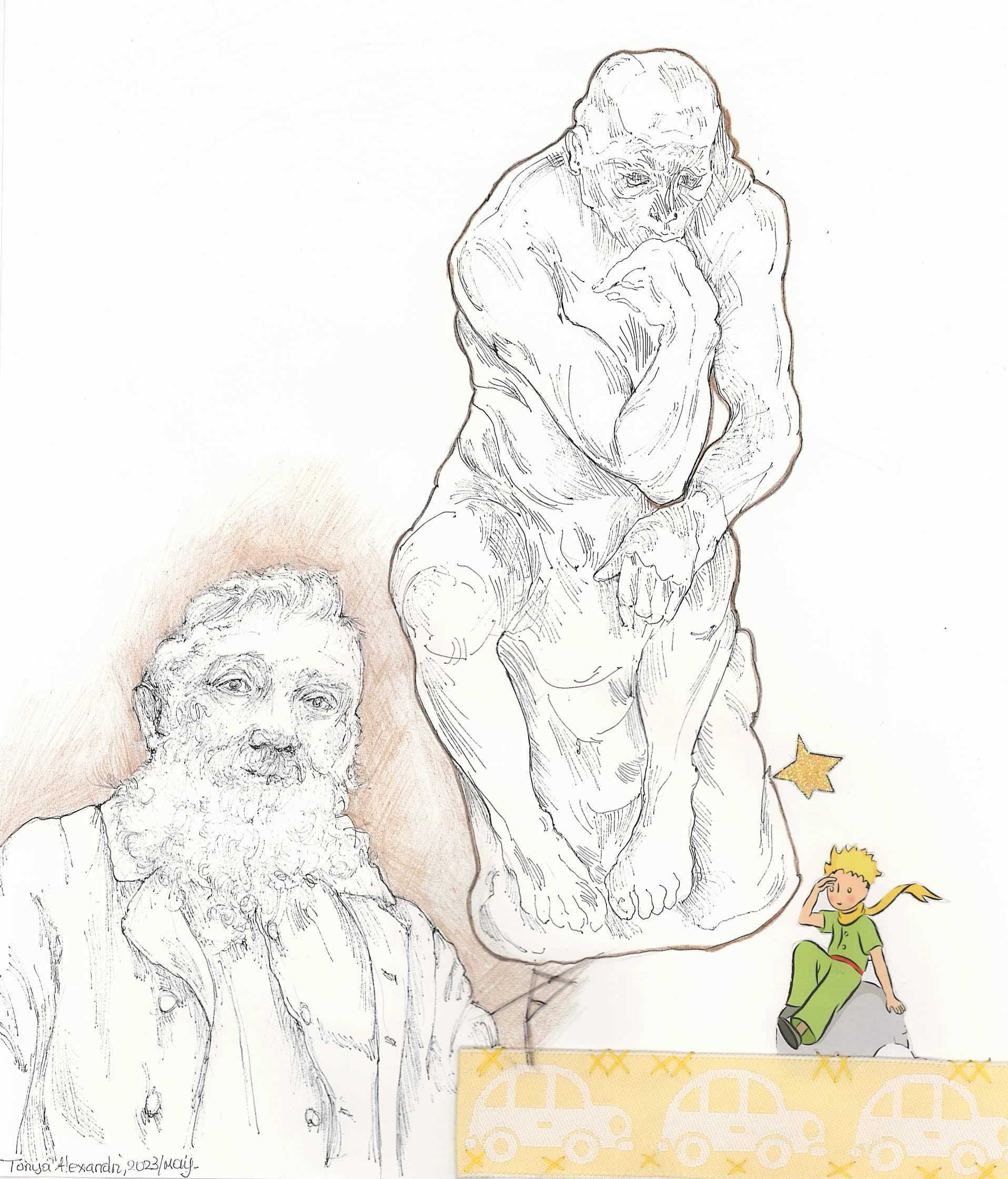
Finally, today I’ll end this post by referring to some basic ideas and values in relation to our one and precious life that resonate with me. Anyone reading my posts will probably be aware of them already. I’ve often thought that in order to clarify and test the sincerity of our values we need to feel and bring to mind what we deeply wish not only for ourselves, but our children or someone we care about and wish good no matter what, and then ask: what would we truly want and what kind of stories, mythologies, value systems and societies would foster and support this for everyone?
People should have the freedom to shape their own lives and find meaning and happiness in the one life we know for certain we have, focusing our attention on creating good lives in the here and now, while supporting other people to do the same. We can make our lives meaningful by creating our own meaning and purpose as we go along. There is no one-size-fits-all best way to live and we should be tolerant of diverse approaches to life, as long as they do not cause harm. To lead fulfilling lives we need a sense of positive freedom, which is not just the absence of restriction on our choices and undermining of our efforts, but the opportunity to consciously create and choose our own purposes and actions to whatever extent possible, We should support our own and others’ flourishing, a wider sense of happiness and wellbeing, which does not focus only on the sense of feeling content in the moment [although this is also important], but describes a sense of fulfilment and satisfaction with our lives as a whole through making the most of life and our potential and through creating a better world. Democratizing and opening up knowledge to the masses would support this. We need to prioritize and support at a societal level the importance of healthy interconnectedness with other people, our ancestors and descendants, and the natural world. Finally, connecting to emotions of wonder, awe and delight at life with all its pain and joy, human achievements, knowledge, creativity, the evolution of our human history, our miraculously complex body, which is not simply a sack of bones and organs, as some seem to believe, the beauty of the natural world, including us humans, our planet, the Universe….
